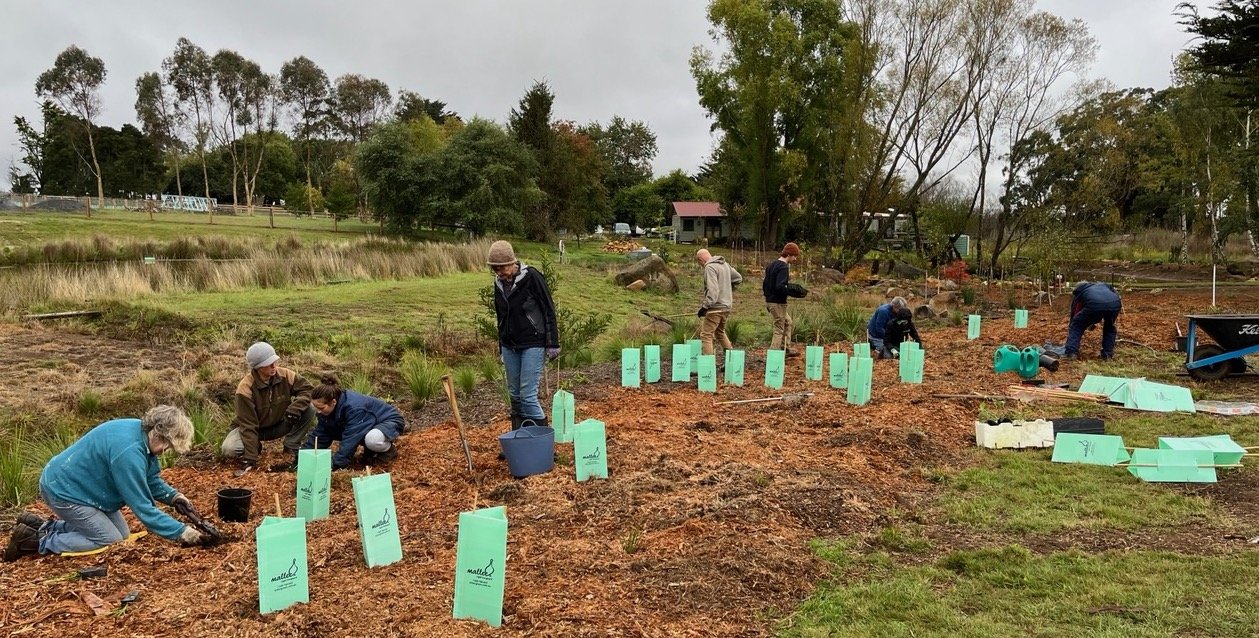Residents for Riparian Rehab
Residents for Riparian Rehab is a new project we began in 2021 which encourages and supports landowners to protect and enhance riparian zones on their property.
Trentham Landcare recognises the importance of riparian vegetation to provide habitat for native biodiversity and to contribute to healthy, functioning waterways. The rivers and creeks of the Trentham District are a distinctive feature, and they contribute to water security for the Upper Coliban Catchment.
Through this project we will offer up to three residents (households), whose properties contain or run alongside waterways, assistance in the form of:
native plant tube-stock purchases of up to $250 per property
site visit to help determine best approach
advice on plant choice
a one-off working bee on each property
In return we ask the residents be open to:
having ‘before and after’ photographs taken
participating in our Residents for Riparian Rehab ‘profiles’ which will feature on our website and form part of a series that demonstrates the possibilities, challenges and value of improving riparian zones through revegetation and weed removal.
attending at least one of our other working bees
Our first ‘residents’ are Nik Round and Kaz Krasovskis (East Trentham). We asked Kaz some questions about their vision and progress….
What is your vision for your property and how does the ephemeral creek fit into that vision?
‘Lisieux’ is, according to many people, the oldest property in the district, and the siting of the house at the convergence of two creeks is probably not coincidence: the ephemeral creek is a connection to the history of the property, as well as a way for me to learn more about indigenous plants and revegetation practices, bring native wildlife into the garden, show local plants to my garden design clients and also give them an example of how attractive a revegetation area can be.
What are some of the native species you have planted along the creek line?
Plants include: Poa labillardieri, Acacia melanoxylon, Acacia verticillata, Eucalyptus radiata, Lomandra longifolia, Carex appressa, Olearia lirata, Brachyscome multifida, Chrysocephalum apiculata semi-papposum, Dichondra repens, Mentha australis, Pomaderris aspera
Tell us about your weed matting - was it worth the effort and would you recommend?
I think the jute matting is good where the mulch would otherwise wash away eg. in sloped creek beds. However, I found that using jute makes it pretty hard or even impossible to properly remove weeds that germinate by hand… it kind of pushes you towards using some kind of herbicide to get rid of the weeds. Perhaps in areas with lower rainfall this seed germination in the material wouldn’t be such a problem?
What challenges are you facing with the revegetation?
I think the challenges are simply weed removal and finding the time to do the project: the success rate with the plants seems to be very high.
With my background in gardening, the plants I love are the ones that have a lot of uniqueness, personality and ‘expressiveness’… the forms of tree ferns and Gahnia sieberiana come to mind, and also plants like Correa alba that can be clipped and shaped. I strangely planted lots of Brachyscome multifida even though I didn’t like them at the time… I have to say I love the effect of them massed together and really provide a point of interest at a very early stage in the revegetation process
——
You can follow Nik and Kaz’s progress here




